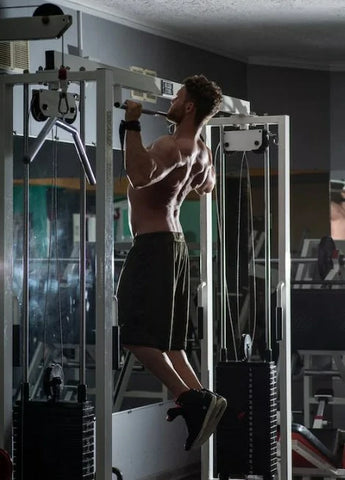What Does Pull Up Target?
Unveiling the Purpose Behind Pull-Up Exercises
When it comes to building strength and increasing muscle mass, few exercises are as effective and versatile as the pull-up. Pull-ups, a fundamental compound exercise, engage multiple muscle groups simultaneously, making them an integral part of any strength training or bodyweight workout routine. But have you ever wondered what exactly pull-ups target, and why they are such a popular exercise among fitness enthusiasts and athletes? In this press release, we delve into the benefits and target muscles of pull-ups, shedding light on the science behind the exercise.Pull-ups are a bodyweight exercise that primarily targets the muscles of the upper body, particularly the back and arms, but they also engage the core and lower body to some extent. The exercise involves lifting your body vertically while hanging from a horizontal bar with palms facing away from you, and gradually lowering yourself back down with controlled movements. The motion of a pull-up requires significant strength and coordination from various muscles, ultimately leading to enhanced physical fitness and functional strength.

One of the primary muscle groups targeted during pull-ups is the back. The latissimus dorsi, commonly referred to as the lats, are the largest muscles in the back and play a crucial role in executing pull-ups. These muscles are responsible for the initial pulling motion and determine the width and thickness of the upper back. Additionally, the trapezius and rhomboid muscles, located in the upper back, are activated during pull-ups, contributing to improved posture and overall upper body strength.
Another key muscle group targeted during pull-ups is the arms. The biceps brachii and brachialis located in the front of the upper arm, as well as the brachioradialis in the forearm, are heavily engaged during the pulling phase of a pull-up. These muscles assist in the flexion of the elbow joint and are crucial for the pulling action required in pull-ups. Regular pull-up training can significantly increase arm strength and result in well-defined biceps.
In addition to the back and arms, pull-ups also engage the core muscles. The rectus abdominis, obliques, and transverse abdominis work together to stabilize the torso during the exercise. Maintaining a strong core helps prevent swinging or arching of the back, ensuring proper form and maximizing the effectiveness of pull-ups. Strengthening these core muscles can lead to improved balance, stability, and overall functional fitness.
While pull-ups predominantly target the upper body, the exercise also involves the lower body to some extent. The muscles of the lower body act as stabilizers during pull-ups and help balance the body during the movement. The glutes, quadriceps, and hamstrings are activated during the exercise and contribute to a more controlled and stable pull-up motion. While pull-ups are not primarily designed to build lower body strength, the involvement of these muscles adds a valuable element of stability and balance to the exercise.
In addition to the specific muscle groups targeted, pull-ups offer several benefits that make them a fundamental part of any fitness routine. Pull-ups are a compound exercise, meaning they engage multiple joints and muscle groups simultaneously. This makes them an efficient exercise for building overall upper body strength and muscle mass. The variety of grip positions in pull-ups, such as wide, narrow, or close, allows for targeting different muscles within the same exercise, ensuring a well-rounded upper-body workout.
Furthermore, pull-ups are a functional exercise that mimics real-life movements, making them valuable for improving daily activities and sports performance. The pulling motion involved in pull-ups directly translates to actions such as lifting objects, climbing, and even swimming. Regularly incorporating pull-ups into a fitness routine contributes to functional strength, improved posture, and enhanced athletic performance.
In conclusion, pull-ups are an exceptional exercise for targeting various muscle groups, primarily focusing on back and arm strength but also engaging the core and lower body to a lesser extent. Their versatility, efficiency, and functional benefits make pull-ups a staple in any fitness routine. Whether you are a beginner or an advanced athlete, incorporating pull-ups into your training routine can lead to improved strength, muscle gains, and enhanced overall physical fitness.






